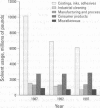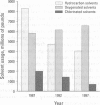Abstract
The implementation of the Montreal Protocol, the Clean Air Act, and the Pollution Prevention Act of 1990 has resulted in increased awareness of organic solvent use in chemical processing. The advances made in the search to find "green" replacements for traditional solvents are reviewed, with reference to solvent alternatives for cleaning, coatings, and chemical reaction and separation processes. The development of solvent databases and computational methods that aid in the selection and/or design of feasible or optimal environmentally benign solvent alternatives for specific applications is also discussed.
Full text
PDF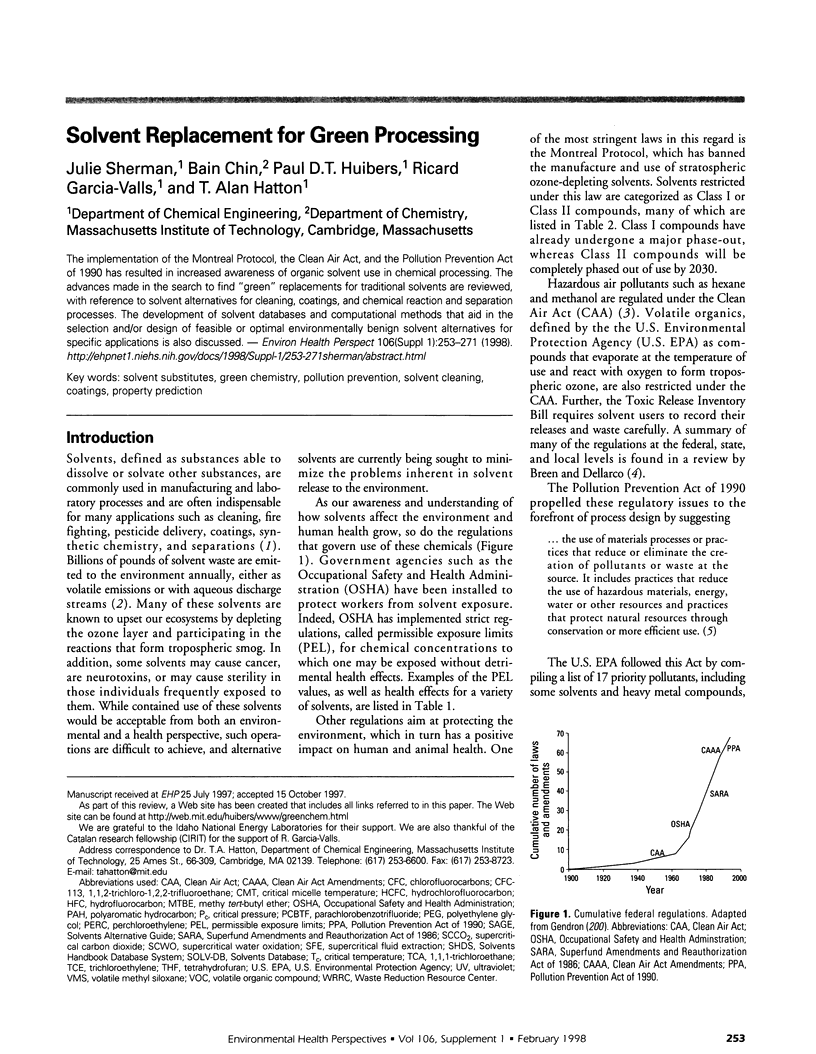
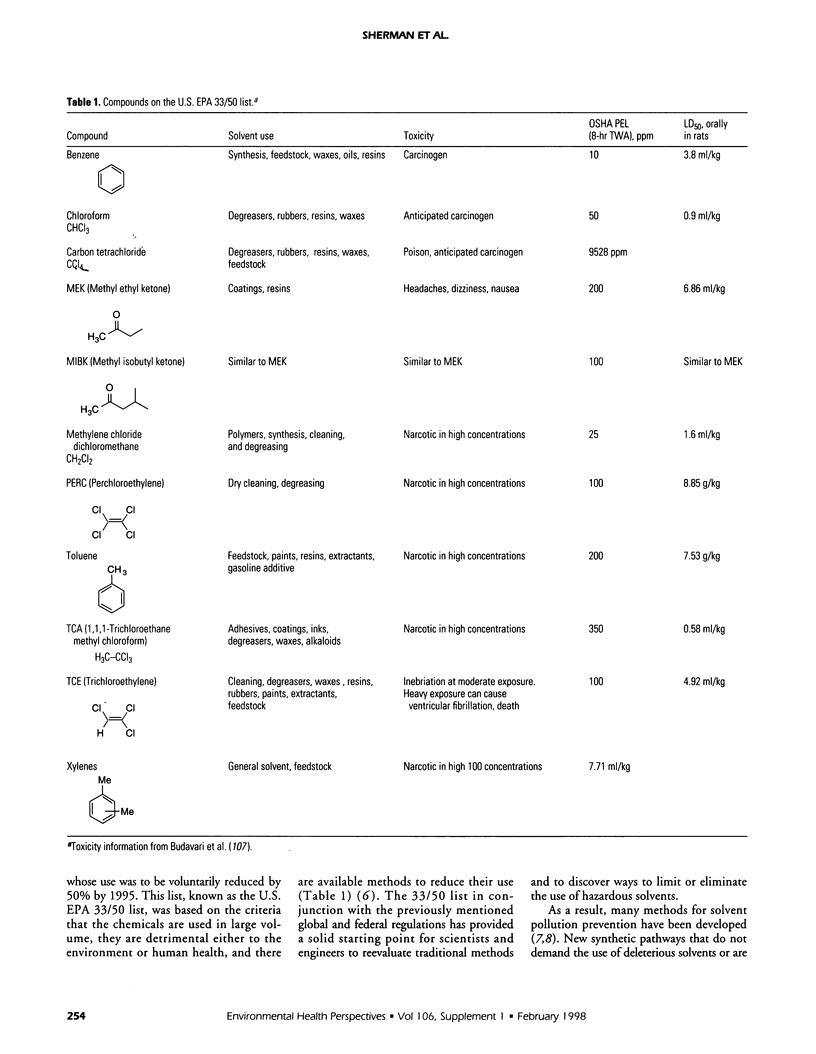
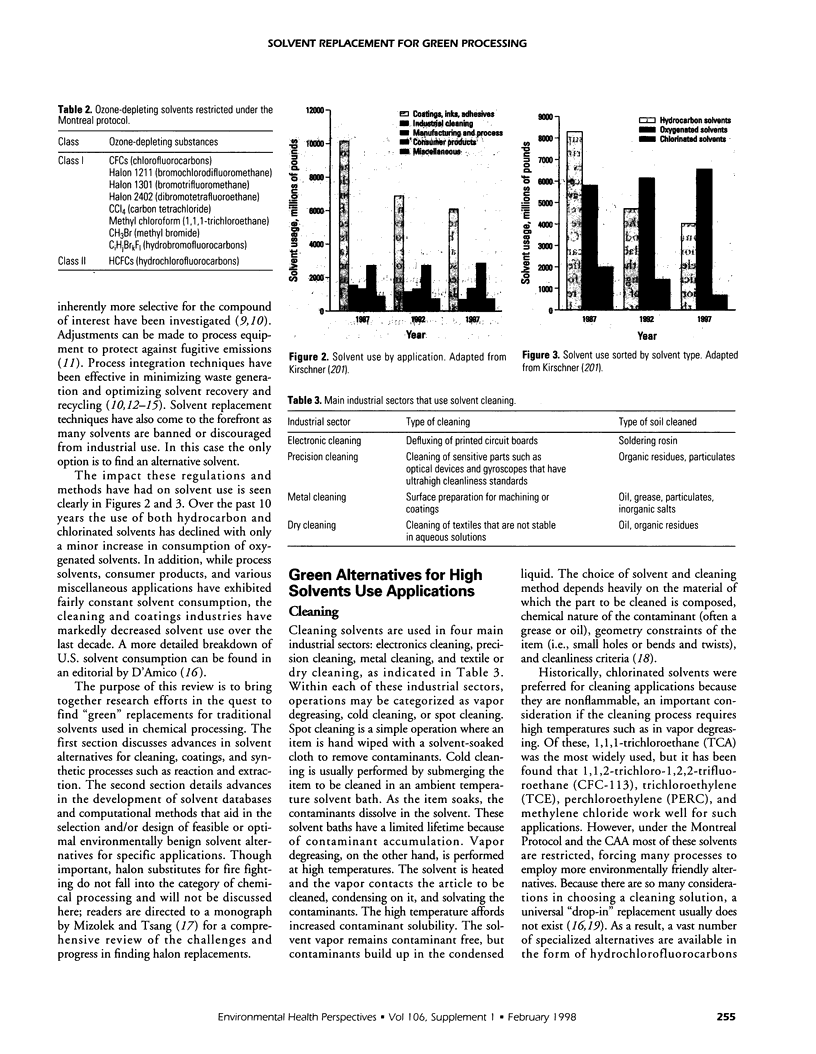
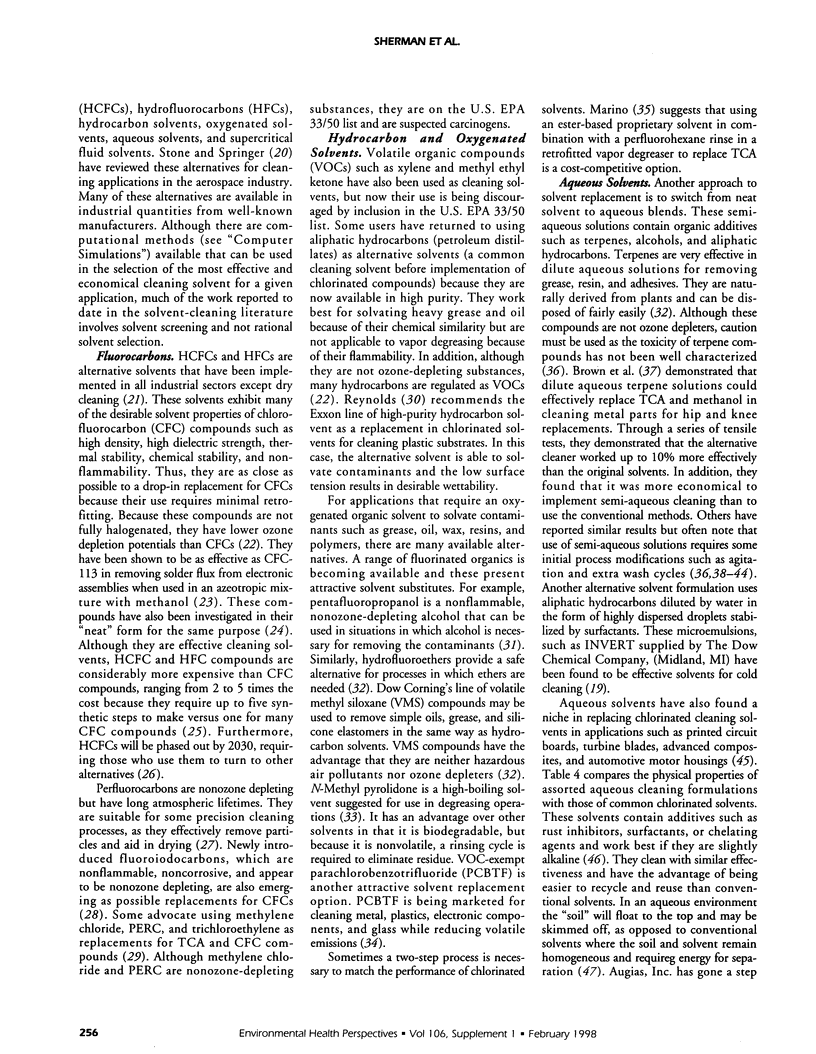
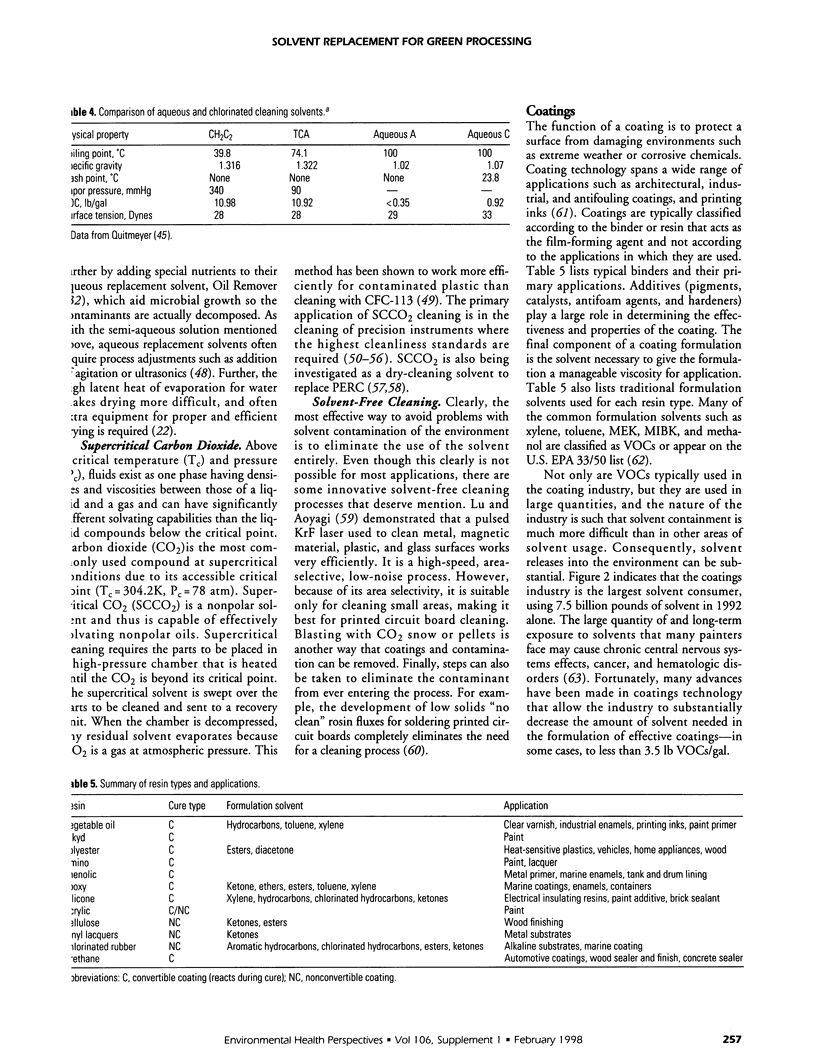
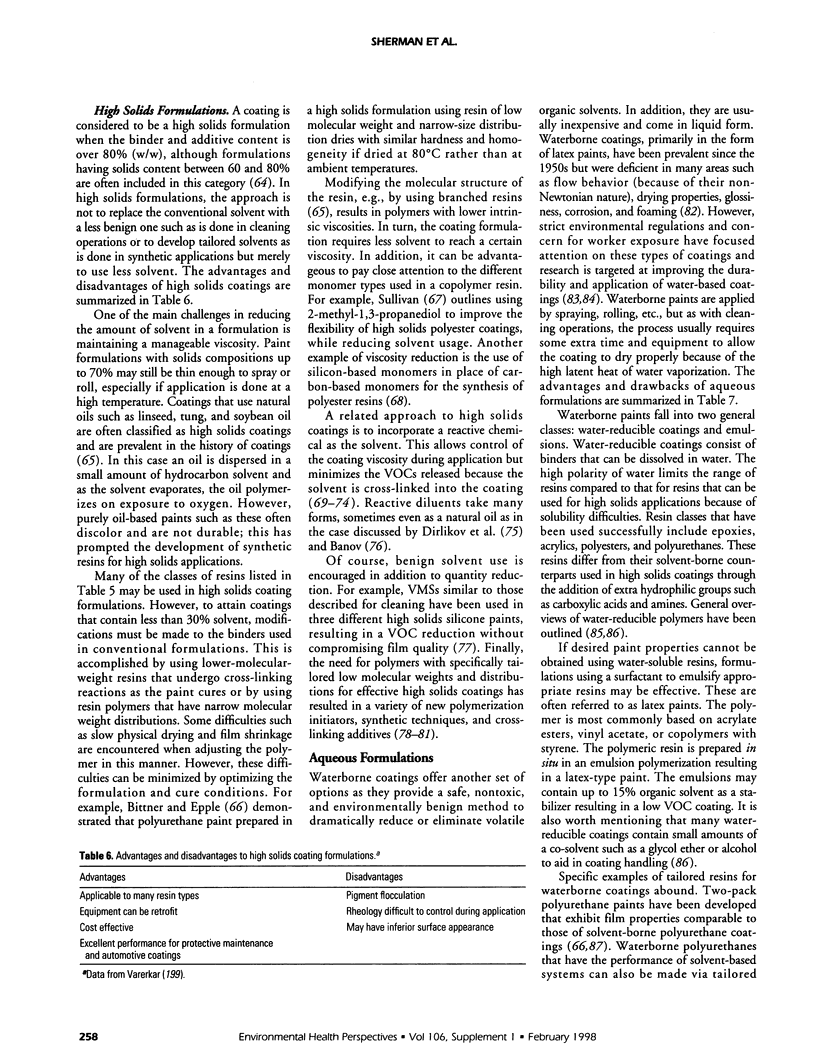

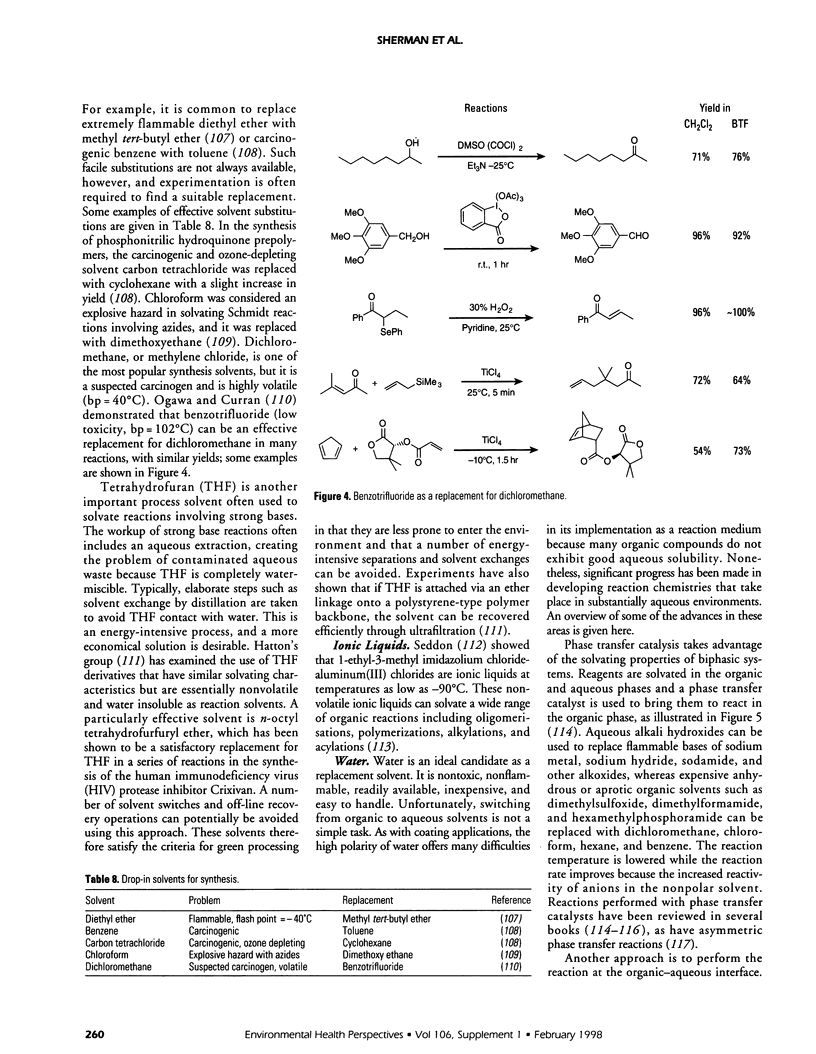
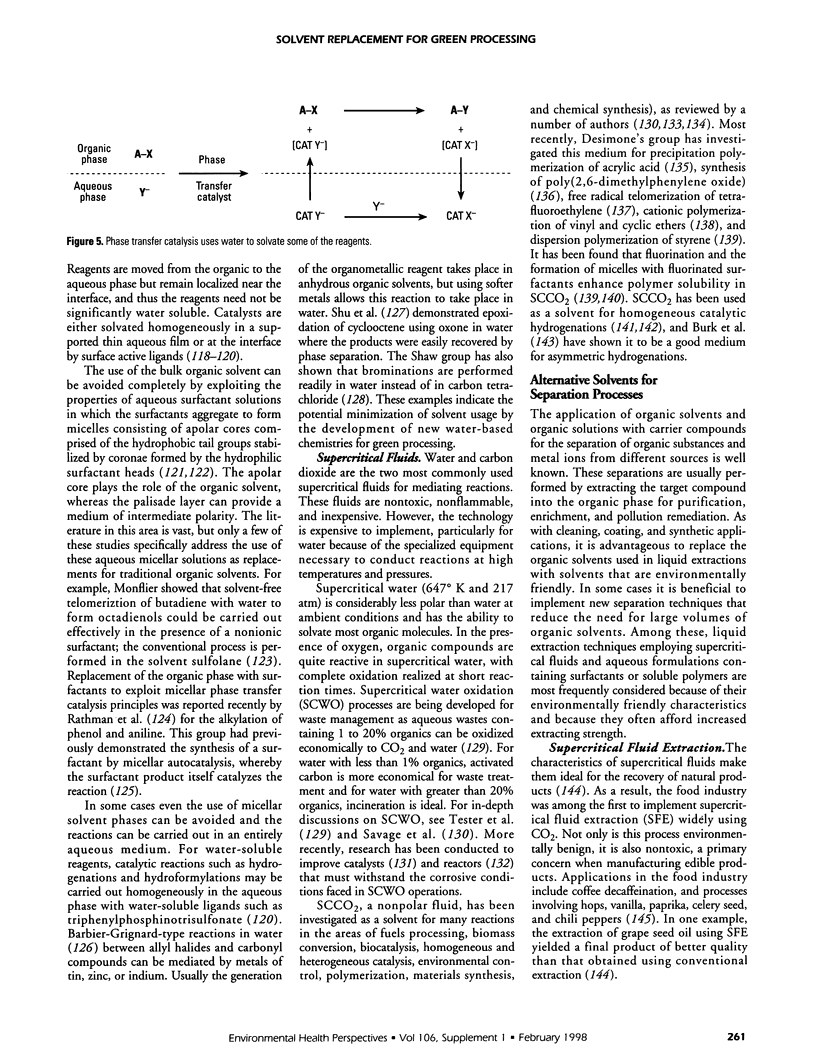
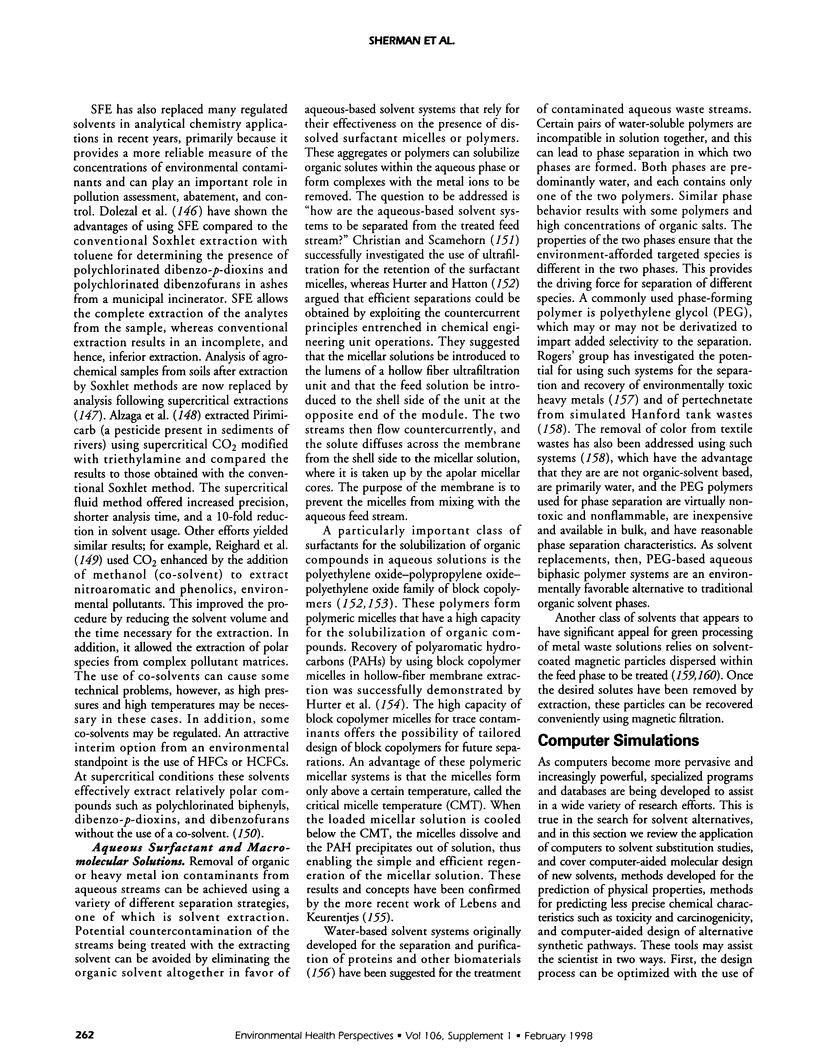
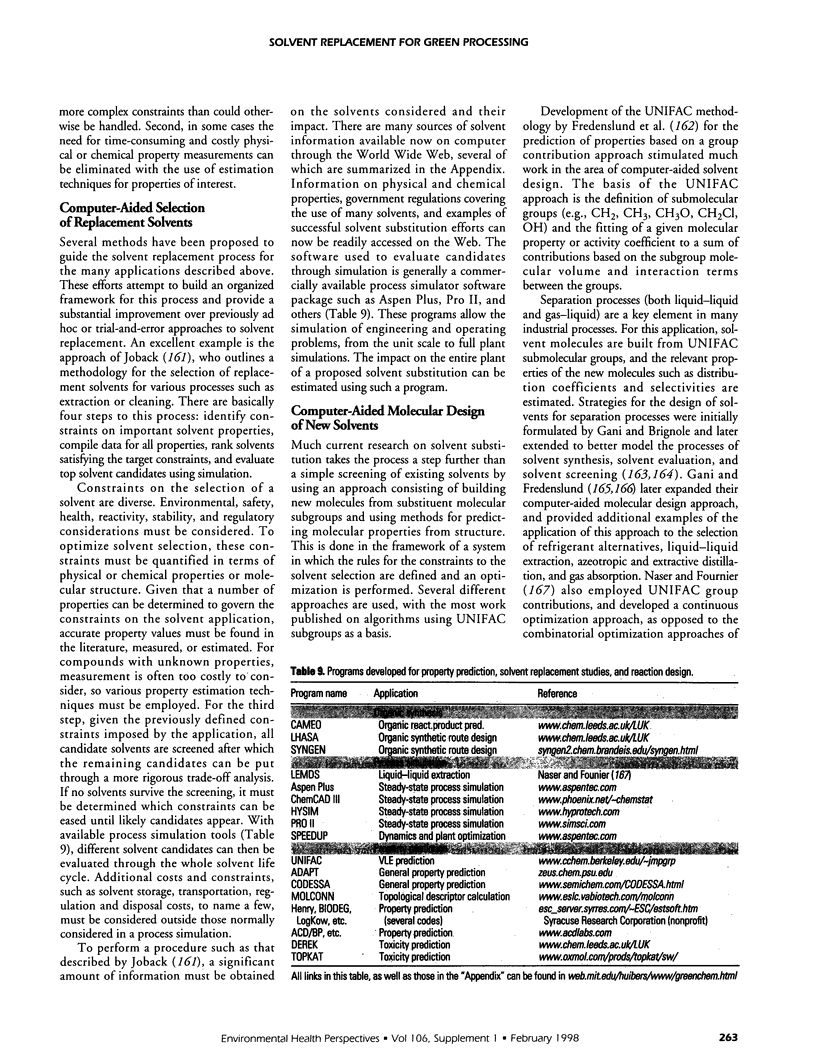
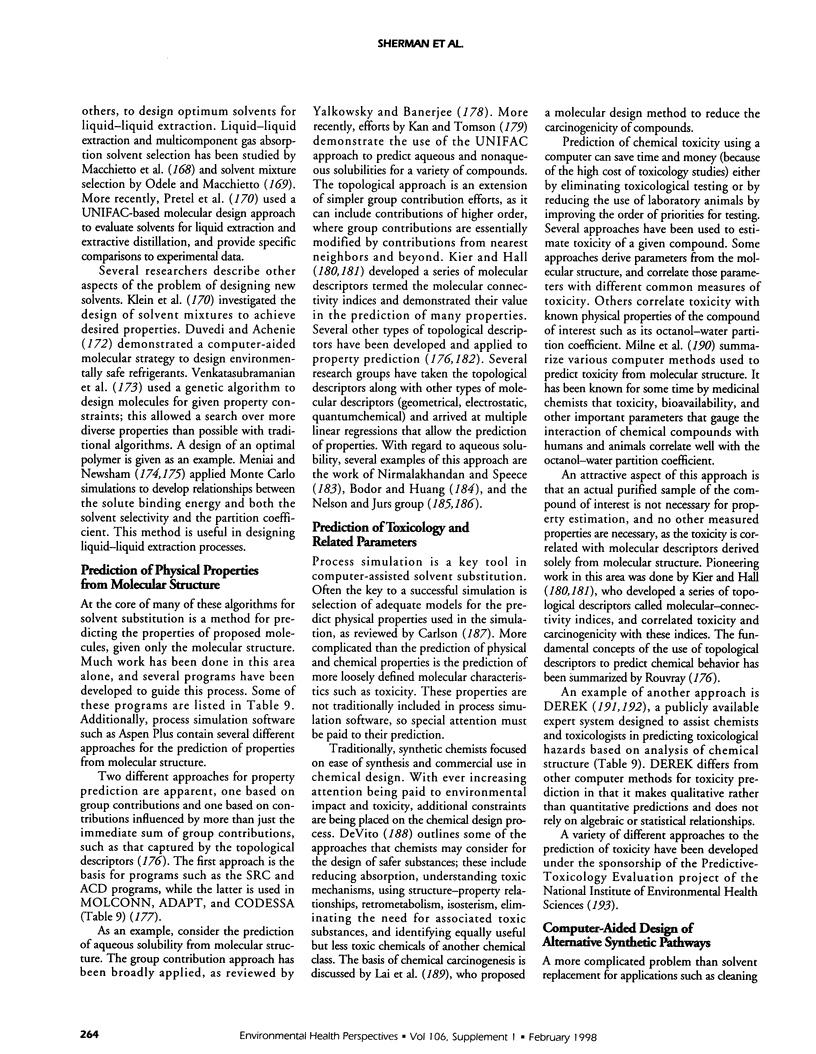
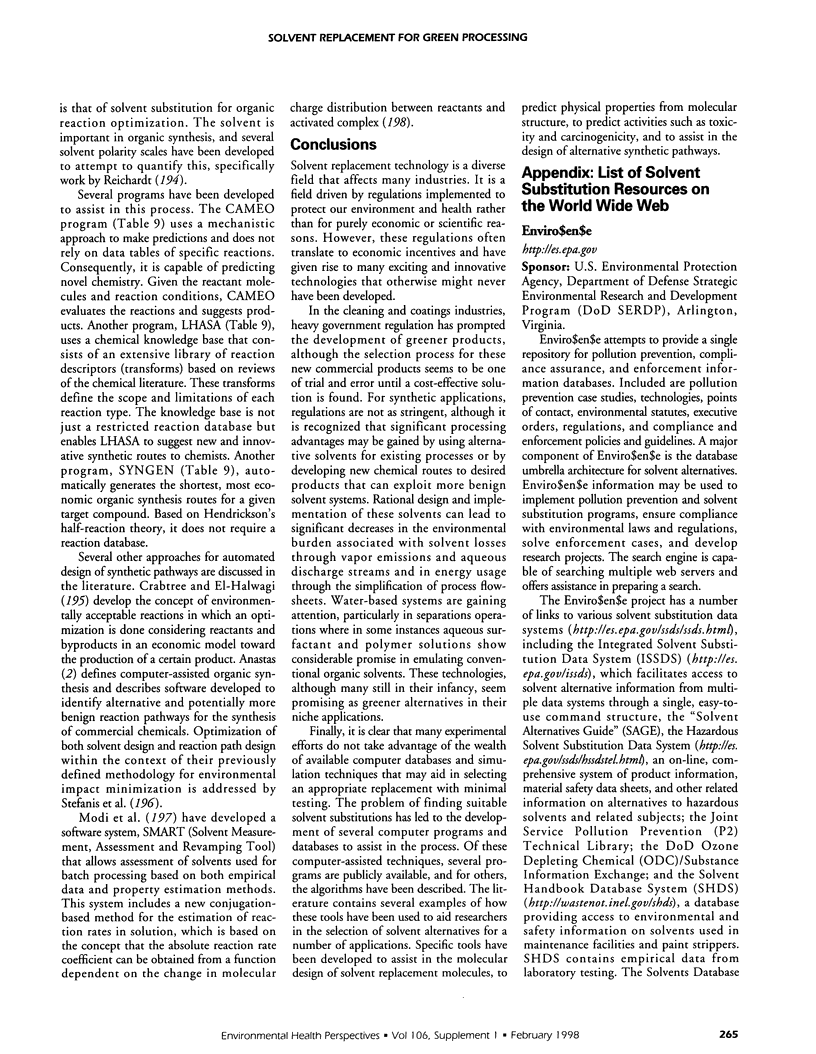
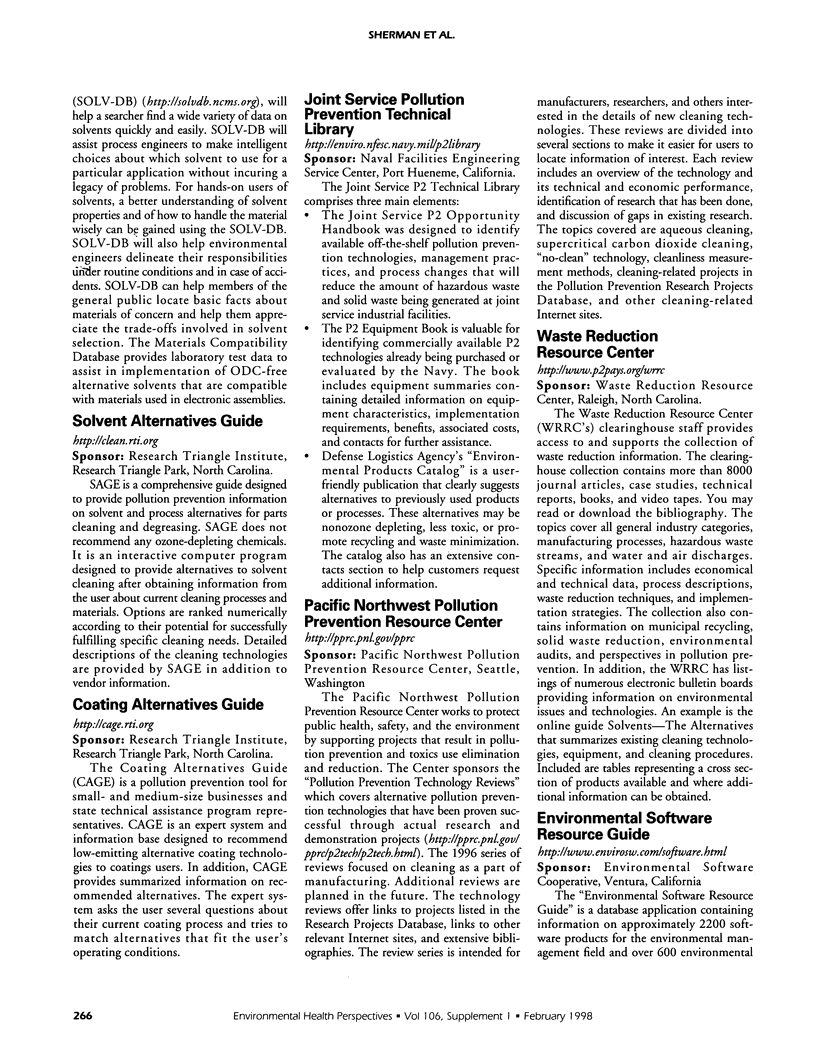
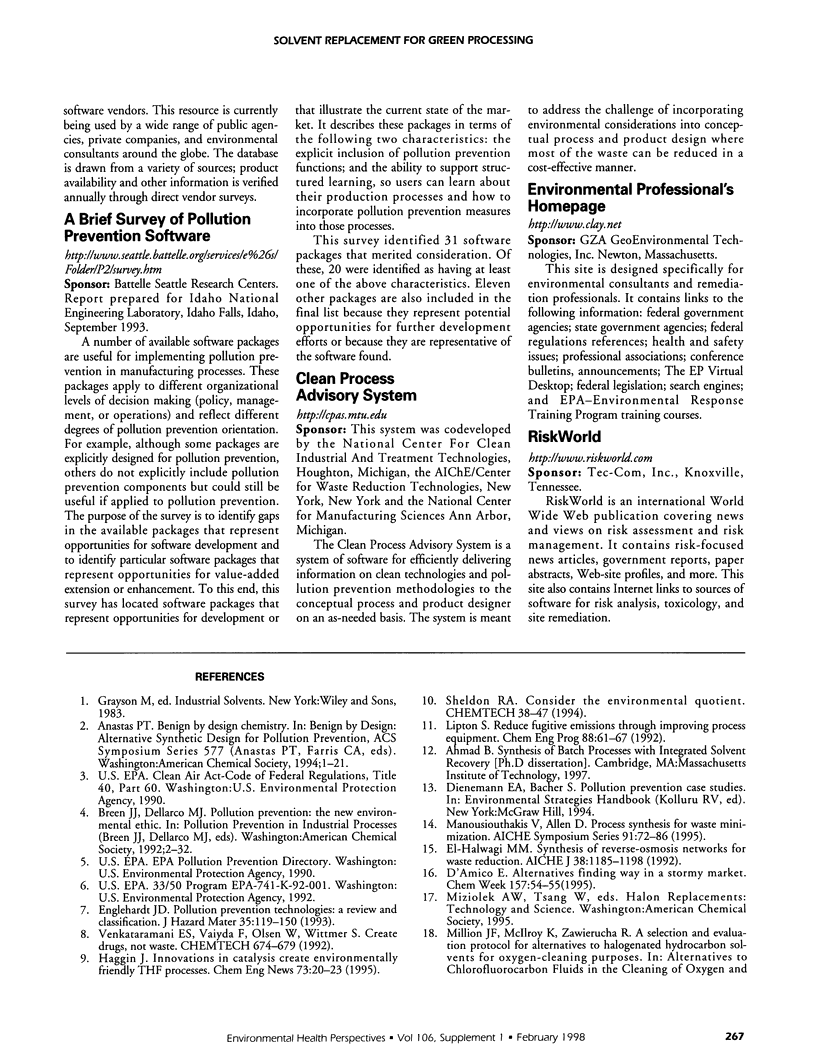
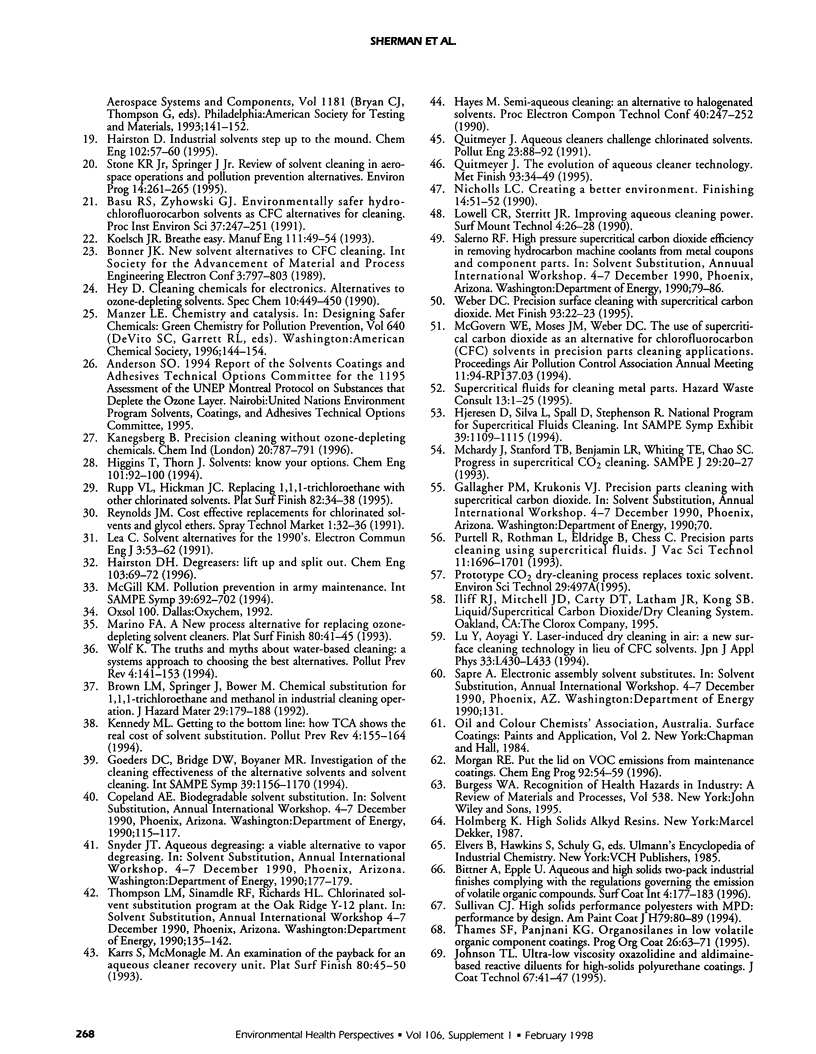
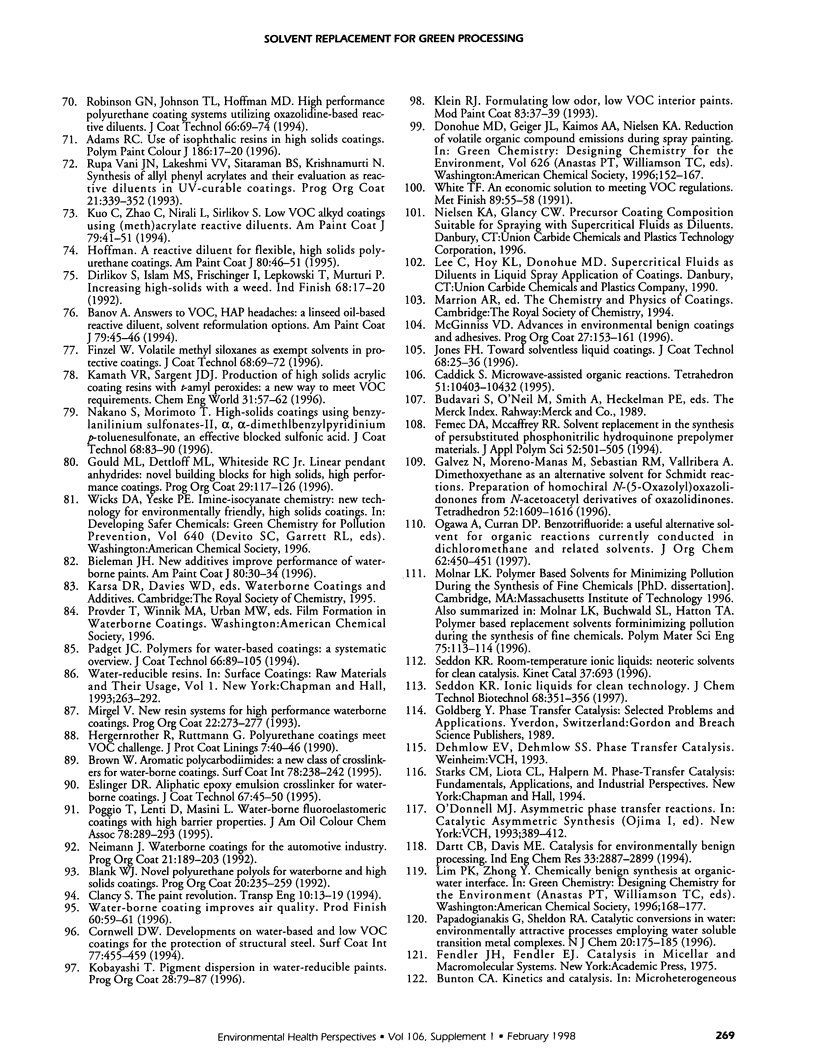
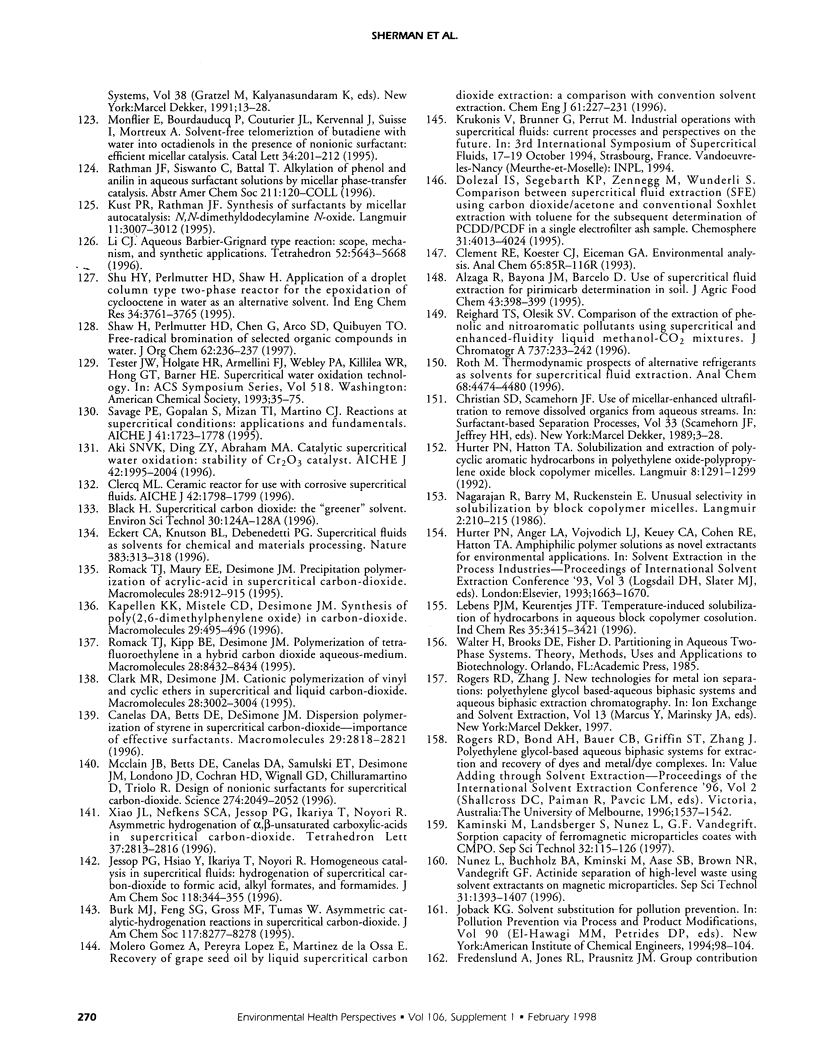
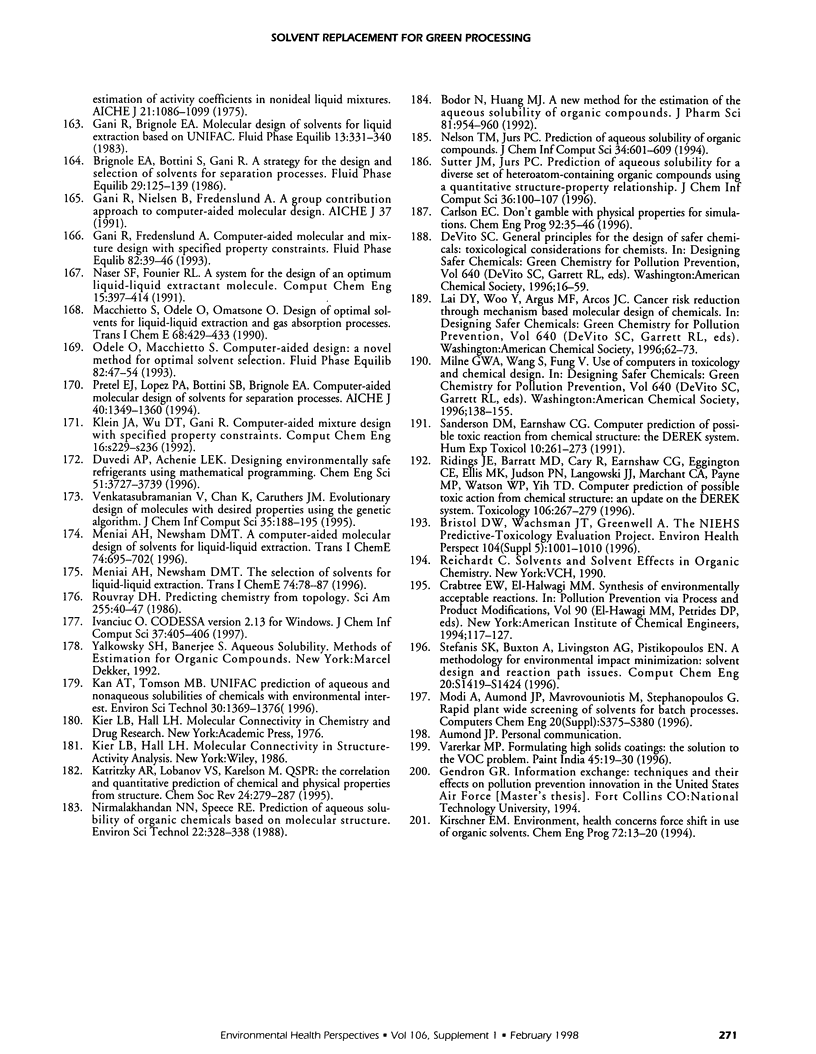
Images in this article
Selected References
These references are in PubMed. This may not be the complete list of references from this article.
- Bodor N., Huang M. J. A new method for the estimation of the aqueous solubility of organic compounds. J Pharm Sci. 1992 Sep;81(9):954–960. doi: 10.1002/jps.2600810924. [DOI] [PubMed] [Google Scholar]
- Bristol D. W., Wachsman J. T., Greenwell A. The NIEHS Predictive-Toxicology Evaluation Project. Environ Health Perspect. 1996 Oct;104 (Suppl 5):1001–1010. doi: 10.1289/ehp.96104s51001. [DOI] [PMC free article] [PubMed] [Google Scholar]
- McClain JB, Betts DE, Canelas DA, Samulski ET, DeSimone JM, Londono JD, Cochran HD, Wignall GD, Chillura-Martino D, Triolo R. Design of Nonionic Surfactants for Supercritical Carbon Dioxide. Science. 1996 Dec 20;274(5295):2049–2052. doi: 10.1126/science.274.5295.2049. [DOI] [PubMed] [Google Scholar]
- Ogawa Akiya, Curran Dennis P. Benzotrifluoride: A Useful Alternative Solvent for Organic Reactions Currently Conducted in Dichloromethane and Related Solvents. J Org Chem. 1997 Feb 7;62(3):450–451. doi: 10.1021/jo9620324. [DOI] [PubMed] [Google Scholar]
- Ridings J. E., Barratt M. D., Cary R., Earnshaw C. G., Eggington C. E., Ellis M. K., Judson P. N., Langowski J. J., Marchant C. A., Payne M. P. Computer prediction of possible toxic action from chemical structure: an update on the DEREK system. Toxicology. 1996 Jan 8;106(1-3):267–279. doi: 10.1016/0300-483x(95)03190-q. [DOI] [PubMed] [Google Scholar]
- Rouvray D. H. Predicting chemistry from topology. Sci Am. 1986 Sep;255(3):40–47. doi: 10.1038/scientificamerican0986-40. [DOI] [PubMed] [Google Scholar]
- Sanderson D. M., Earnshaw C. G. Computer prediction of possible toxic action from chemical structure; the DEREK system. Hum Exp Toxicol. 1991 Jul;10(4):261–273. doi: 10.1177/096032719101000405. [DOI] [PubMed] [Google Scholar]
- Shaw Henry, Perlmutter Howard D., Gu Chen, Arco Susan D., Quibuyen Titos O. Free-Radical Bromination of Selected Organic Compounds in Water. J Org Chem. 1997 Jan 24;62(2):236–237. doi: 10.1021/jo950371b. [DOI] [PubMed] [Google Scholar]
- Waterman W. H., Molski T. F., Huang C. K., Adams J. L., Sha'afi R. I. Tumour necrosis factor-alpha-induced phosphorylation and activation of cytosolic phospholipase A2 are abrogated by an inhibitor of the p38 mitogen-activated protein kinase cascade in human neutrophils. Biochem J. 1996 Oct 1;319(Pt 1):17–20. doi: 10.1042/bj3190017. [DOI] [PMC free article] [PubMed] [Google Scholar]



